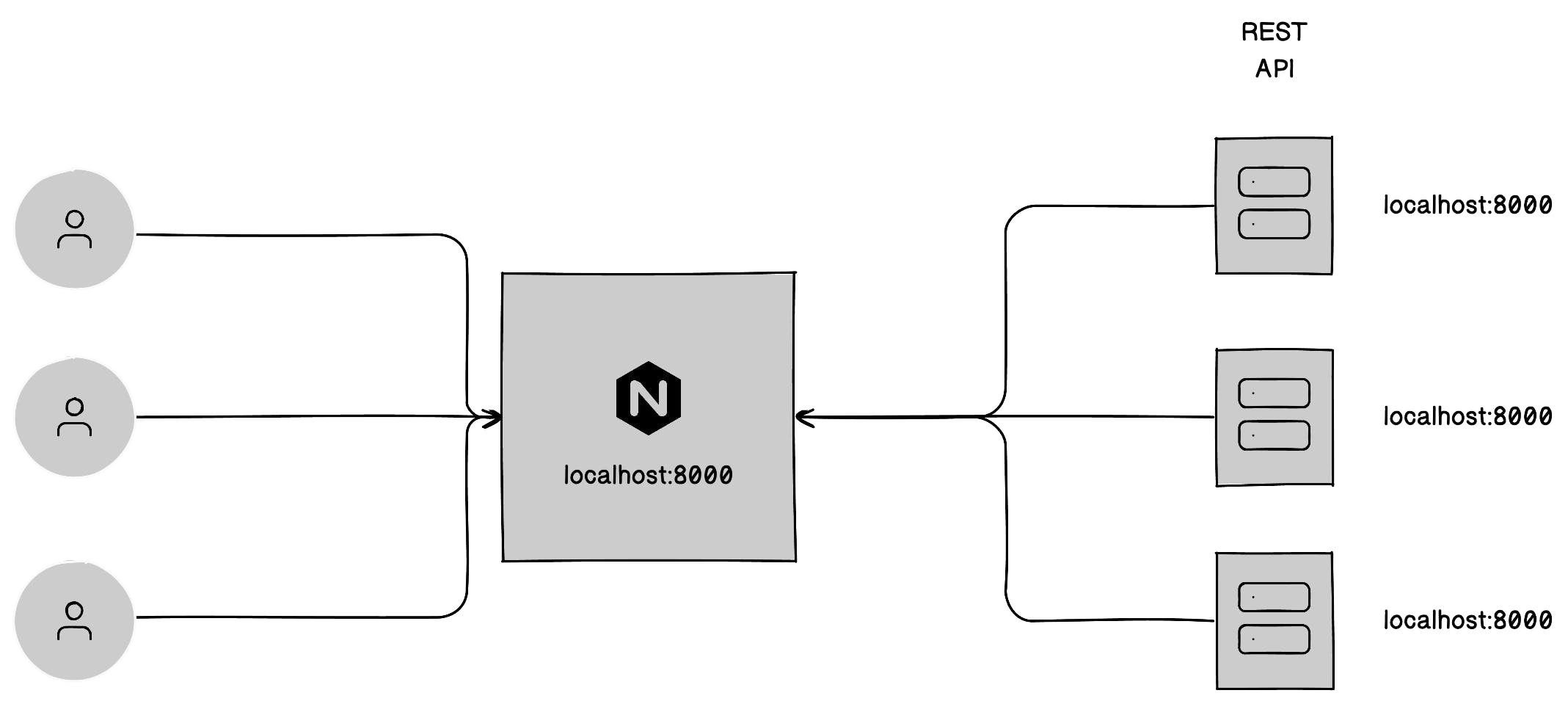Table of contents
No headings in the article.
NGINX is an advanced web browser that can be used as a reverse proxy, load balancer, mail proxy, and caching mechanism. In this short tutorial, we scale a golang REST API service with docker-compose and distribute all the load from the client to these multiple service instances.

The client makes an API call to http://localhost:8000/ endpoint, which hits the nginx service that internally proxies the request to one of the 3 instances of the REST servers running on the port 8000. We will be using the Round robin load-balancing technique that can help us to almost evenly distribute the load across every instance.
build golang servers image with Dockerfile
FROM golang:1.18-alpine AS builder RUN mkdir /app WORKDIR /app COPY . . RUN CGO_ENABLED=0 GOOS=linux go build -o app cmd/api/main.go FROM alpine:latest AS production WORKDIR /app COPY --from=builder /app/app . CMD [ "./app" ]
docker-compose file - run the golang servers and nginx load balancer
version: "3.8" services: rest_api: build: context: ./server dockerfile: Dockerfile environment: - PORT=:8000 networks: - server-network command: /start nginx: image: nginx:latest volumes: - ./conf.d/nginx.conf:/etc/nginx/nginx.conf depends_on: - rest_api ports: - 8000:8000 networks: - server-network networks: server-network: driver: bridge
nginx conf file - We'll define events and set the expected maximum client concurrent connections to 1024. We can define a group of REST servers(image=rest_api) inside the upstream block. We can also mention the load balancing method inside the upstream block. NGINX server will listen on the port
8000of the host. NGINX will proxy all the requests hitting at/route toapp_serversgroup.events { worker_connections 1024; } http { upstream app_servers { # default load balancing method is Round Robin # other ex. least_conn, ip_hash, etc server rest_api:8000; } server { listen 8000; location / { proxy_pass http://app_servers; proxy_set_header Host $host; proxy_set_header X-Real-IP $remote_addr; proxy_set_header X-Forwarded-For $proxy_add_x_forwarded_for; } } }
Now we can start multiple instances of golang REST API servers with the following command -
$ docker-compose up --build --scale rest_api=3
NGINX will serve the same request through different REST server instances -



